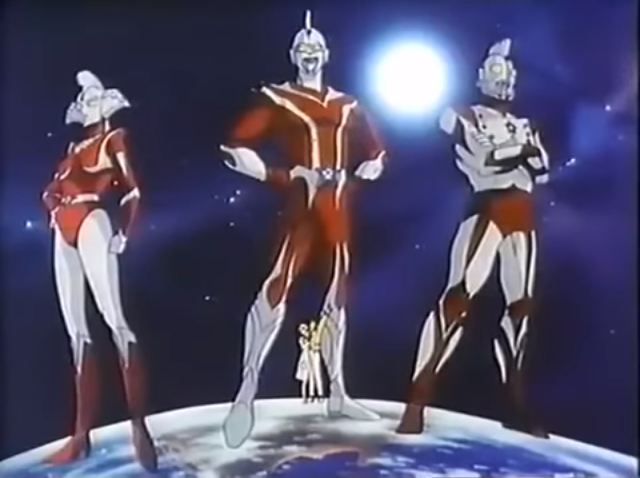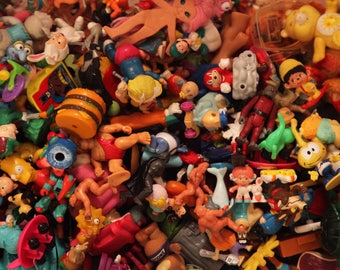Think back to the 1980s, more specifically the cartoons of the time. Think back to those action-packed shows like Transformers, Voltron, Robotech, G.I Joe, He-Man, Thundercats, and the vast ocean of other shows of a similar brood that flooded the market and soaked in the ratings. Now think back to the toys from those shows and how they would form mountains of plastic that would litter the floor of every kids’ bedroom. These shows and toys would line the pockets of TV Networks, toy companies, and production studios across America for over a solid decade. If you were a production studio in the 80s you wanted a piece of this pie. So, of course, everyone’s favorite little production company that could, Tsuburaya Productions saw a new window to jump through.

However, before we get into the mix, context is needed. Did you ever wonder why kids cartoons in the 1980s became such a toy heavy market? Well you see in 1981 a new commissioner was appointed to the FCC, his name was Mark S. Fowler and he believed that whether if children were able to discriminate advertising in their cartoons was pointless and that the early advertising regulations were unneeded. He wanted to have a hands-off, free-market approach to advertising in kid cartoons and soon we saw the big shift in programming. Thus leading to this new wave of new cartoons that pushed merchandise like never before in America. Licensed cartoons and shows fundamentally designed to sell toys hit the airwaves and soon caught the eyes of many of the youths of the time, much to the detriment of their parents’ wallets.

So where was Tsupro at this point? Now as we are all aware of at this point, Tsupro wasn’t doing too hot right at the moment. The failure of Ultraman 80 left the company without a foothold in Japanese television and outside of Andros Melos, they hadn’t created a new series in over 6 years at this point. It’s 1986 and Tsuburaya Productions catches wind of the boom in highly profitable kids shows in America. They also see how IPs from Japan were getting their own American shows, whether it be in an original show based off of a video game originally from Japan or an anime being recut and dubbed in English. So the ever-ambitious company had an idea and this idea was to go back to America for the first time since the dub of Ultraman with a new Ultra series to take advantage of this toy pushing, kids focused, highly profitable climate.

However, to break into the American market, Tsuburaya needed a collaborator. Someone to help them man a new show designed for American markets, help them meet the regulations for American TV, and put money into this new project. The collaborator that would help Tsuburaya develop this new addition in the Ultra series may come as rather surprising to some of us, seeing how their collaborator was the American animation studio, Hanna-Barbera.

So let’s take this space to talk about their partner in this new idea. For those who are not aware, Hanna-Barbera is an American animation company famed for creating shows like Scooby Doo, The Flintstones, The Jetsons, The Smurfs, Top Cat, and so on. Their animations flooded American TV from the 1960s into the early 80s where they were pushed out of the market by the rise in competition. Hanna-Barbera has a very troubling legacy in animation. They are one of the biggest factors in why animation is viewed as something primarily for children to this day. They are infamous for extremely cheap animation practices and pushing a quantity over quality mindset in animation. They flooded the animation market with a series of rip-offs of their more successful properties. In all honesty, they are a topic in themselves and I cannot give a good quick summary at the moment. In short, HB isn’t the best figure in animation and by the mid-1980s they were on their last leg desperately searching for success to keep the company alive.
At this point, the Smurf Boom had ended and Hanna-Barbera’s foothold was the smallest in TV then it had ever been before and their reputation was little more than a joke at this point. So when Tsuburaya Productions approached them with the idea of a new show that could take advantage of the merchandising cartoon wave of the 1980s Hanna-Barbera, was quick to sign on. So in 1986, director Mitsuo Kusakabe, writer John Eric Seward, and composer Shinsuke Kazato with animation done by Ashi Productions (now known as Production Reed) were sent off to make an Ultra show that was 100% for American audiences with Ultraman: The Adventure Begins/USA.

Surprisingly during production, not too many issues or items of note popped up. Early in production Tsupro planned to make the series live-action, though Hanna-Barbera was quick to say that it should be animated so it could be easier to work with and really cash in on the wave of toy cartoons. This is why Ashi Productions was called in. Their animation was dynamic, they were accustomed to working with larger than life figures due to their experience of working on mecha shows, and not too expensive to hire. Their style would also blend in better with the other shows of the time. Another point of note was that Keita Aminiya (Creator of works such as Garo and Jiban) did the designs for the Ultras of the series.
Communication ran smoother here than during Great and Powered’s production. There were no real problems in writing or planning. There was some debate over the design of the Ultra Heroes, if there should be a woman Ultra in the show, and how many Ultras there should be, but it was all quickly resolved. The only real issue during the production process was trying to find a network to air the show on. Neither Tsupro or HB had much of a foothold in the American television markets and no network was too confident in a show headed by a complete unknown studio and one that was on its last leg. It was viewed as a risk. So to bring confidence in the product and try to catch the eyes of potential investors, Tsupro and HB decided to put together the first few episodes of USA and make a movie from it. Now, in all honesty, this isn’t a bad decision and Tsupro wasn’t rushing into this half-cocked with a toy line and video game tie-in already in the process like with Towards The Future and The Ultimate Hero. However, the problems popped up in the timing of the release.
Ultraman: The Adventure Begins came out on October 12th, 1987. On TV on an unlisted children’s programming block where it is said to have garnered some attention. However, not enough to prove viable. To many TV execs, this was just another toy pushing TV show in a market already oversaturated with them, and as more shows of this started to decline or end, it didn’t feel like a wise investment to take on another. Despite performing well, it wasn’t even the best airing thing of the day and programmers didn’t even try to air it on a more popular block. The film easily got overshadowed and the USA never made a big impact with American audiences, let alone network executives.

To make the situation even worse distribution was very poor. Ultraman USA was released to Japanese theaters in 1989 where it had found decent success, but it was too late. USA wasn’t given a theatrical release anywhere else. The VHS release was also very limited; a version of the Japanese dub was released to Japanese audiences on VHS in 1989. However, a bilingual release wouldn’t happen until 1991 on laserdisc, yet it was not for America. It wasn’t until 1993, six years after the original theatrical release of USA in America did it get a home VHS release in its home country.
TV Networks just weren’t really willing to put what seemed to be a random product on air. The movie idea was a good one, however as I said previously, it was just released at a poor time. Despite the lack of interest Ultraman: The Adventure Begins garnered, it is a really solid work and fills an important role in Ultra History as both the last Ultra work of the Showa era and the first Ultra made for foreign audiences. It’s a farewell to old ideas and a beginning of the journey into the world at large for Tsupro. Though despite having the least disastrous backstory out of the foreign Ultras, it still met failure. Though once again in Tsupro’s eyes, there is no failure, just another chance to start over. The Adventure Begins marks both an ending and a beginning, the beginning of a journey into the Heisei era where great success would lie.
Sources
- https://www.awn.com/animationworld/dr-toon-when-reagan-met-optimus-prime
- https://ja.wikipedia.org/wiki/%E3%82%A6%E3%83%AB%E3%83%88%E3%83%A9%E3%83%9E%E3%83%B3USA
- https://dic.nicovideo.jp/a/%E3%82%A6%E3%83%AB%E3%83%88%E3%83%A9%E3%83%9E%E3%83%B3usa
- https://dic.pixiv.net/a/%E3%82%A6%E3%83%AB%E3%83%88%E3%83%A9%E3%83%9E%E3%83%B3USA
- https://www.illustrationhistory.org/essays/hanna-barbera-the-architects-of-saturday-morning
- https://en.wikipedia.org/wiki/Ashi_Productions
- https://en.wikipedia.org/wiki/Ultraman:_The_Adventure_Begins
- https://www.imdb.com/title/tt0230915/
- https://cultfaction.com/2018/06/06/preview-ultraman-usa-ultraman-the-adventure-begins-bluray/
